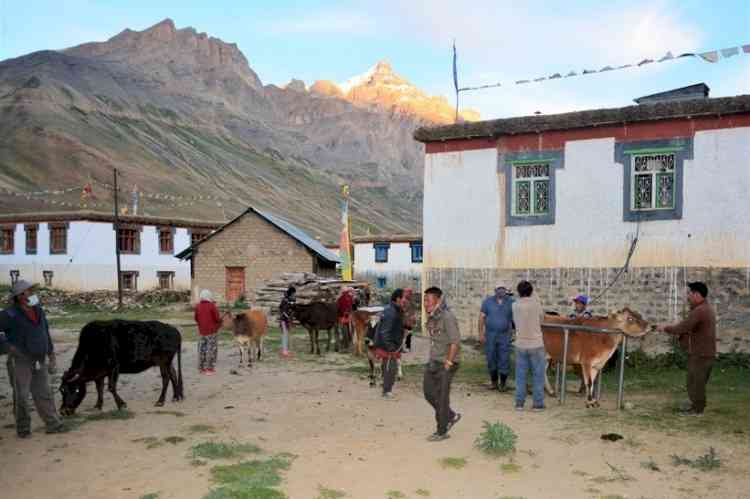Himachal to conserve native Pahari cow

Shimla: Seeing the dairy potential in strengthening the rural economy, the Himachal Pradesh government is launching a three-year project of Rs 4.64 crore with the central government assistance for the conservation and propagation of genes of Pahari cow, state Animal Husbandry Minister Virender Kanwar said on Friday.
The hill cattle, recognized as Himachali Pahari cattle, constitutes about 7.59 lakh, or 41.52 per cent, of the total cattle population in the state and contributes about 7.46 per cent to the total milk production.
However, due to changes in the socio-economic environment, the short-statured Pahari cattle, highly adaptable to the hilly terrain and disease-resistant that can thrive on even poor pastures, this unique indigenous cattle breed is under threat of extinction.
Kanwar told IANS the Pahari cow that has been recognized as an indigenous breed by the National Bureau of Animal Genetic Resources (NBAGR), reflects the biodiversity of livestock in the hilly state.
The central project will be launched in Sirmaur district in 10.9 hectares to develop a nuclear herd of this breed, improve it and conserve it in its original tract with the original characteristics of its cows and bulls.
The state will set up three ultra-modern shed at the initial cost of around 75 lakh to rear 50-disease tested Pahari cattle (30 adult and 20 heifers).
The procurement of animals will be done from farmers whose animals have record of lactation yield.
In order to reduce the operational cost of dairy farm, own forage and silage preparation from green fodder crops will be practiced. The dung is to be used as organic fertilizer manure for green fodder cultivation.
The farm will act as centre for development of the indigenous breed as well as to conserve the germ plasm and will act as a dependable source for supply of high genetic breeding stock to the farmers by way of bulls or semen.
It will be equipped with scientific waste management and rainwater harvesting facilities as well as a fodder farm, said Kanwar.
"Compared to other breeds, this species provides much less milk but its quality is very rich. Its milk production per lactation cycle is around 540 kg. They mostly find their own feed by grazing and are resistant to common diseases, making them suitable for low-budget, besides traits like adaptability to the harsh climate, tough mountainous terrain and ability to fight disease," the minister said.
The bullocks of this breed are most suitable for farming in hilly terrains. Also, because of its smaller size, its feed requirement is less, making it more economical for the hill farmers who have small farm holdings, he said.
The cattle are the most abundant livestock species of Himachal Pradesh, having population of 18.28 lakh as per 2017 census and comprise 41.42 per cent of the total livestock population of 44.13 lakh.
Among different type of cattle resources, the native hill cattle popularly known as Desi, Pahari or Hilly cattle and indigenous breeds, now recognized as Himachali Pahari Cattle, are the primary population of the cattle.
Studies by the Veterinary Microbiology and Immunology Department of the Chaudhary Sarwan Kumar Himachal Pradesh Agriculture University in Palampur say the milk of the Pahari cow contains A2 Beta-casein protein in good quantity and it is good for health.
The A2 Beta-casein plays a protective role against heart diseases, autism and diabetes.
However, the milk of the exotic Holstein and Jersey breeds do not contain this component and instead have an alternative A1 allele that has been associated with these diseases.
"A1 allele is not at all present or negligible in the milk of the local cows," says the study.
Studies said the hill cattle are highly adaptogenic and have better innate and adaptive immune responses to fight infectious diseases like tuberculosis, foot-and-mouth and brucellosis. Even the native cow urine has anti-microbial properties.


 IANS
IANS 








